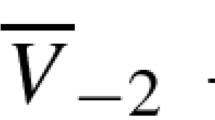Abstract.
The description of fermions on curved manifolds or in curvilinear coordinates usually requires a vielbein formalism to define Dirac γ-matrices or Pauli matrices on the manifold. Derivatives of the vielbein also enter equations of motion for fermions through the spin connection, which gauges local rotations or Lorentz transformations of tangent planes. The present paper serves a dual purpose. First we will see how the zweibein formalism on surfaces emerges from constraining fermions to submanifolds of Minkowski space. However, it is known e.g. in superstring theory, that so called half-order differentials can also be used to describe fermions in two dimensions. Therefore, in the second part, I will explain how in two dimensions the zweibein can be absorbed into the spinors to form half-order differentials. The interesting point about half-order differentials is that their derivative terms along a two-dimensional submanifold of Minkoski space look exactly like ordinary spinor derivatives in Cartesian coordinates on a planar surface, and the whole effect of the background geometry reduces to a universal factor multiplying orthogonal derivative terms and mass terms.
Similar content being viewed by others
References
M. Lannoo, P. Friedel, Atomic and Electronic Structure of Surfaces (Springer-Verlag, Berlin, 1991)
H. Lüth, Solid Surfaces, Interfaces and Thin Films, 4th edn. (Springer-Verlag, Berlin, 2001)
W. Mönch, Semiconductor Surfaces and Interfaces, 3rd edn. (Springer-Verlag, Berlin, 2001)
W. Nolting, T. Dambeck, G. Borstel, Z. Phys. B 94, 409 (1994)
R. Schiller, W. Müller, W. Nolting, Eur. Phys. J. B 2, 249 (1998)
R. Schiller, W. Müller, W. Nolting, J. Phys. Cond. Mat. 11, 9589 (1999)
F.-H. Wang, P. Krüger, J. Pollmann, Phys. Rev. B 64, 035305 (2001)
M. Rohlfing, N.-P. Wang, P. Krüger, J. Pollmann, Surface Science 539, 19 (2005)
A. Eiguren, B. Hellsing, F. Reinert, G. Nicolay, E.V. Chulkov, V.M. Silkin, S. Hüfner, P.M. Echenique, Phys. Rev. Lett. 88, 066805 (2002)
J.L. Gavilano, D. Rau, S. Mushkolaj, H.R. Ott, P. Millet, F. Mila, Physica B 312–313, 622 (2002); Phys. Rev. Lett. 90, 167202 (2003)
A. BenAli, S. Charfi-Kaddour, G. Varelogiannis, C. Paquier, M. Héritier, D. Jérôme, R. Bennaceur, Physica C 408–410, 244 (2004)
J.L. Gavilano, E. Felder, D. Rau, H.R. Ott, P. Millet, F. Mila, T. Cichorek, A.C. Mota, Phys. Rev. B 72, 064431 (2005)
R. Dick, Eur. Phys. J. B 29, 635 (2003)
R. Dick, Class. Quantum Grav. 18, R1 (2001)
R. Dick, Chiral Fields on Riemann Surfaces and String Vertices, Dissertation, Universität Hamburg, 1990; Fortschr. Phys. 40, 519 (1992)
N.S. Hawley, M. Schiffer, Acta Math. 115, 199 (1966)
S.S. Chern, Proc. Amer. Math. Soc. 6, 771 (1955)
R. Courant, D. Hilbert, Methods of Mathematical Physics, Vol. 2 (Interscience Publ., New York, 1962)
O. Lehto, in Discrete Groups and Automorphic Functions, edited by W.J. Harvey (Academic Press, London, 1977), p. 121
C. Itzykson, J.-M. Drouffe, Statistical Field Theory, 2 Vols. (Cambridge University Press, Cambridge, 1989)
R. Dick, Lett. Math. Phys. 18, 67 (1989)
A. Borel, F. Hirzebruch, Amer. J. Math. 81, 315 (1959)
J. Milnor, Enseign. Math. 9, 198 (1963)
L. Baulieu, M. Bellon, Phys. Lett. B 196, 142 (1987)
Author information
Authors and Affiliations
Corresponding author
Rights and permissions
About this article
Cite this article
Dick, R. Electrons in curved low-dimensional systems: spinors or half-order differentials?. Eur. Phys. J. B 53, 127–138 (2006). https://doi.org/10.1140/epjb/e2006-00338-y
Received:
Published:
Issue Date:
DOI: https://doi.org/10.1140/epjb/e2006-00338-y



